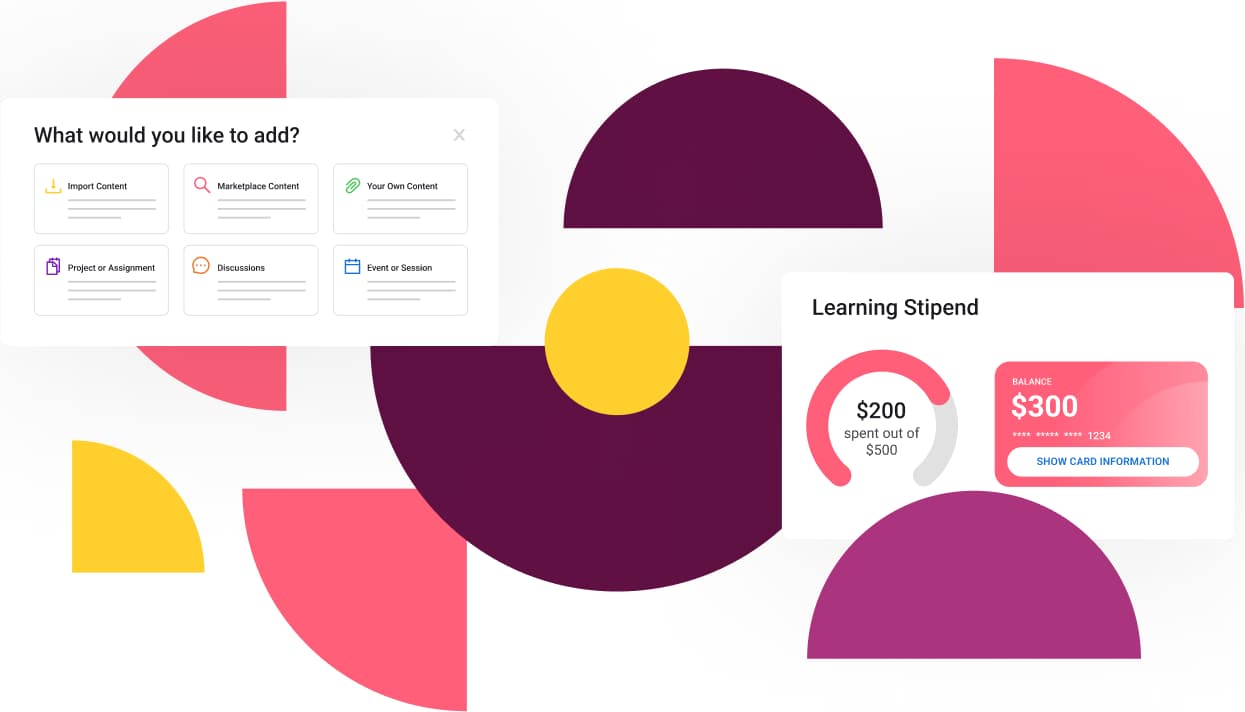Double Engagement (Not Your Spending) By Rethinking Employee Tuition Reimbursement
Most US companies (71%) offer some form of tuition assistance or employee tuition reimbursement. Is your company one of them?
As education benefits are on the rise, companies are pulling out their old education benefits playbook. Even the respected SHRM wrote an article last year applauding companies investing in tuition assistance. But if companies want impressive employee engagement and upskilling, they’ll need to rethink this outdated solution.
By rethinking employee tuition reimbursement, here’s how you can double employee engagement and upskilling—all without dipping further into your learning and development piggy bank.
The Problem With Employee Tuition Reimbursement
While employee tuition reimbursement is popular, it’s important to remember that it won’t get the job done. This is especially true when you look at how much this model costs per employee and fails to engage employees.
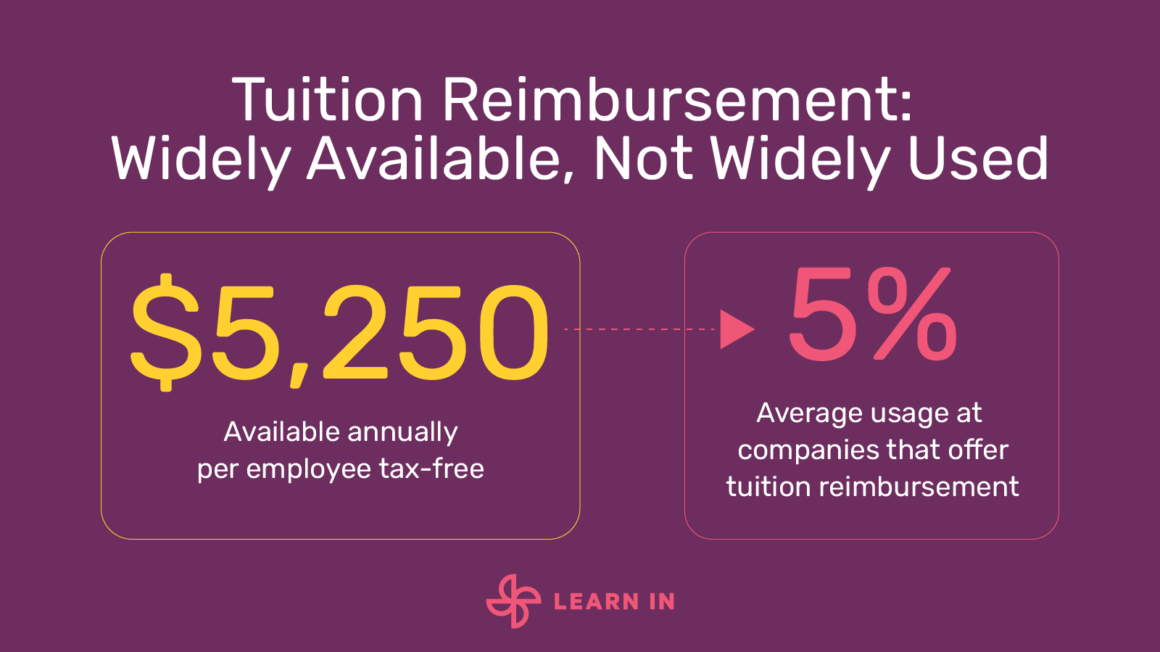
A company offering employee tuition reimbursement typically gives employees $5,250 to earn a degree. This is a lot of money to spend on every employee, and in the end, on average, only 3-5% of employees take advantage of their tuition assistance program. Surely there has to be a better solution that costs less per employee and appeals to more employees.
A Modern Approach To Education Benefits
What education benefits show more promising results? You can invest that money you’ve put into tuition reimbursement programs towards more modern and inclusive education benefits like prepaid learning stipends and internal talent academies.
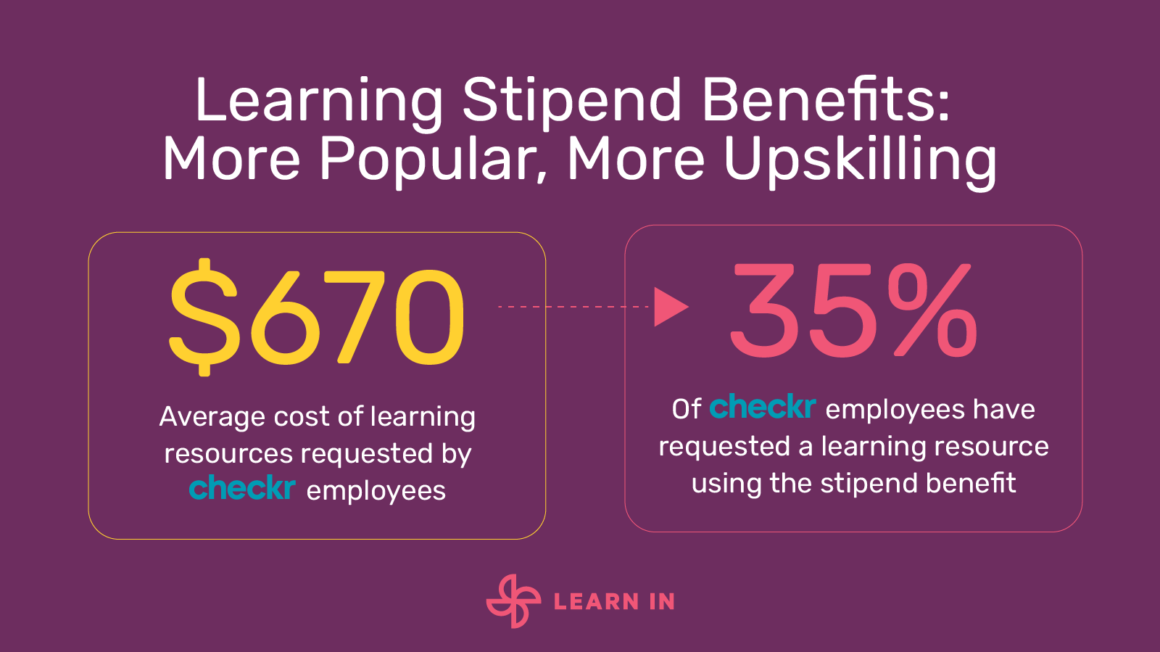
In a recent case study, Checkr, an up-and-coming HR technology company, found they more than doubled their learner engagement and upskilling in six months by offering a prepaid learning stipend. Before the prepaid stipend, Checkr offered a more traditional reimbursement stipend to their employees, and their employees used 2.5% of those funds. (It fits right into that 3-5% utilization companies are seeing around the country when they use reimbursement benefits!)
Now within six months of launching prepaid learning stipends, 35% of Checkr employees have requested an educational program or resource. On average, the Checkr employees’ requests are upskilling programs that cost about $670.
See how Checkr managed to double learner engagement in just six months.
Lower Overall Cost & Double The Engagement
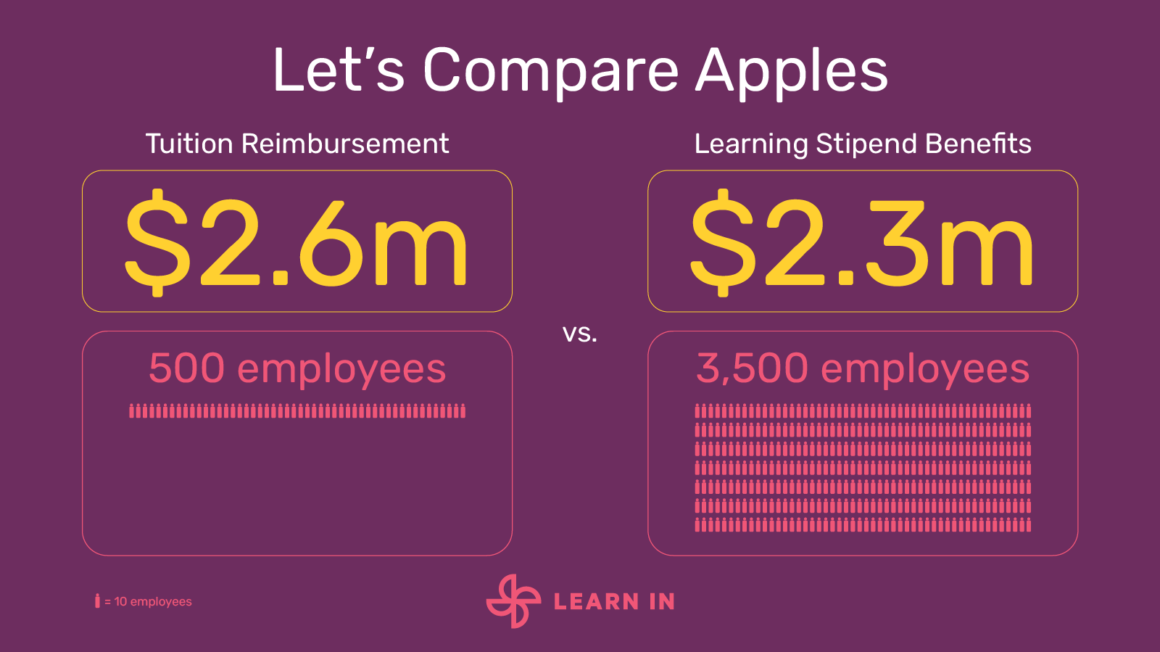
Let’s do the math here for a hypothetical company. If a company with 10,000 employees offers employee tuition reimbursement, based on cost per employee and average engagement, they can expect to spend 2.6 million for 500 employees.
If that same company offered a more modern education benefit, based on the cost per employee and engagement seen at Checkr, they can expect to spend 2.3 million for 3,500 employees to upskill. And because more people are using less expensive programs, it works out that the overall cost for the company is less and boosts employee engagement.
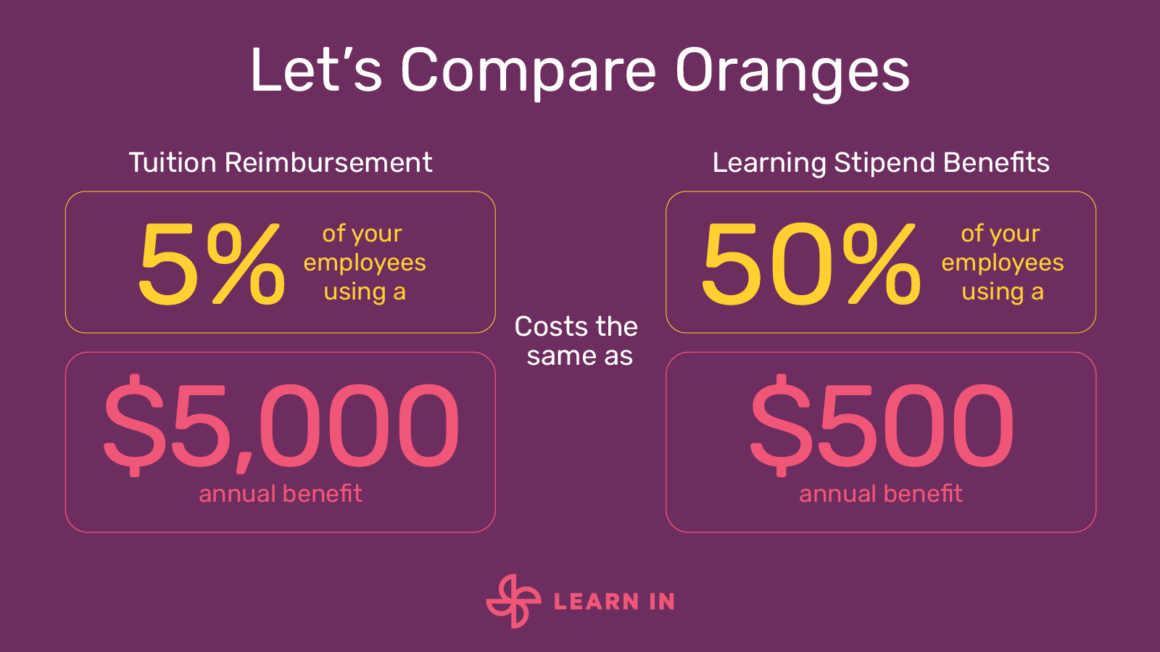
Lower Overall Cost & Higher Impact
But do modern benefits offer the same level of upskilling as tuition reimbursement? The answer is yes. Actually, it can be argued that employees develop the right skills faster using modern education benefits.
Most employee tuition reimbursement programs help employees earn a degree, and degrees require a lot of time and money to complete. On average, it takes a person four years to earn a two-year degree, and it costs $10,300 a year to attend a community college in the United States. And at the end of all of it, does your employee’s new degree align with your company’s talent needs? Sometimes.
On the other hand, more modern solutions like immersive upskilling and boot camps require less money and time. And instead of a degree dictating what skills you learn, employees can pick the most relevant and applicable courses and programs to their professional goals. For example, a modern solution like an internal talent academy is skill-based and employees can pick out skills that align with the talent needs of your company.
Smarter Spending for Learning and Development
Companies won’t get ahead of today’s talent shortage by offering a traditional employee tuition reimbursement. For a competitive edge, they need to reallocate their tuition reimbursement money towards more modern education benefits like prepaid learning stipends. It’s the more thoughtful way to go. And by being more thoughtful about spending your L&D money, you can spend the same amount and drive more learning outcomes.
To learn more about the hurdles facing traditional tuition reimbursement, read “HR Myth: Your Tuition Assistance Program is a Benefit.”

